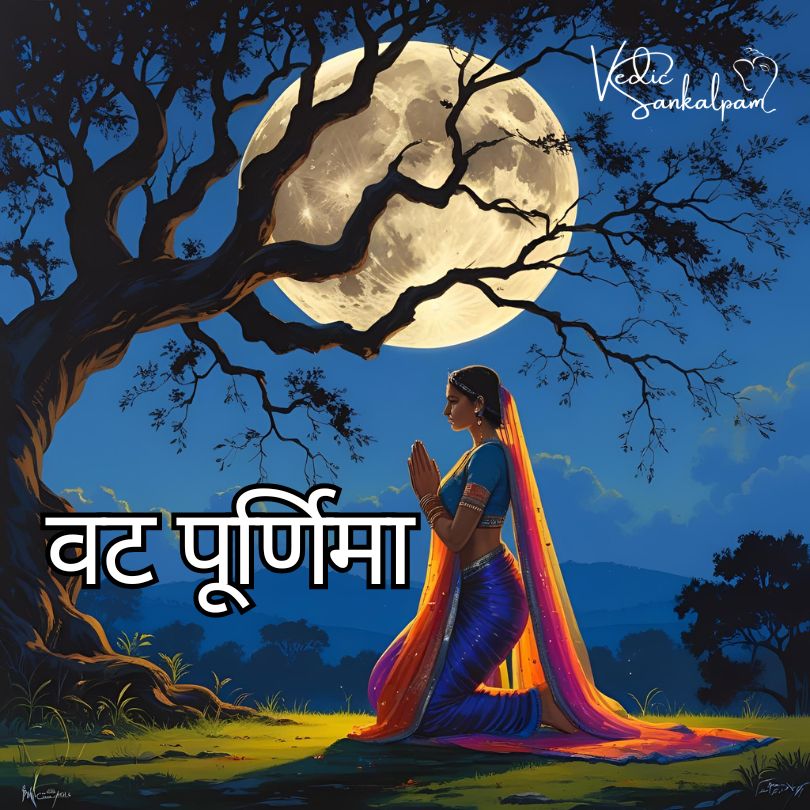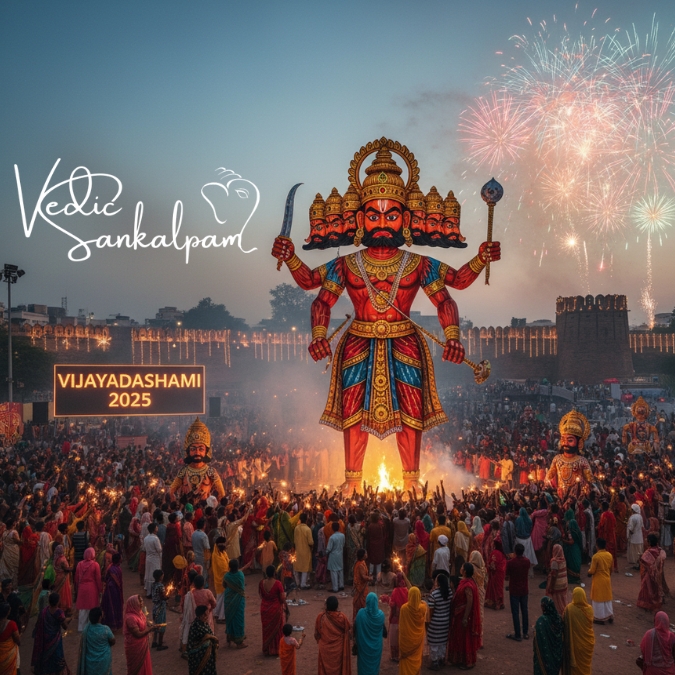What is Vat Purnima?

Vat Purnima, also known as Vat Savitri Vrat, is a revered Hindu festival celebrated predominantly by married women across Maharashtra, Gujarat, and parts of North India. This festival is observed to pray for the long life, prosperity, and well-being of husbands. Inspired by the legendary tale of Savitri and Satyavan, this day is marked by ritual fasting, prayers, and ceremonies held under the sacred banyan tree (Vat Vriksha).
Significance of Vat Purnima in Hindu Culture
The spiritual importance of Vat Purnima lies in its deep-rooted connection with marital fidelity, perseverance, and love. It commemorates the undying devotion of Savitri who brought her husband Satyavan back to life through her unwavering commitment and prayers to Lord Yama, the god of death. The banyan tree, symbolic of longevity and immortality, plays a vital role in this observance. Women tie sacred threads (raksha sutra) around the tree, signifying a bond that transcends lifetimes.
When is Vat Purnima Celebrated?
Vat Purnima is celebrated on the full moon day (Purnima) in the month of Jyeshtha as per the Hindu lunar calendar, which usually falls in May or June. The 2025 Vat Purnima will be observed on June 10, 2025. On this auspicious day, women wake up early, take a ritualistic bath, and dress in traditional sarees with mangalsutra and bangles, symbolizing their married status.
Vat Purnima Rituals and Traditions
1. Early Morning Preparations
The day begins with women rising before dawn, bathing with sesame-infused water, and donning bridal attire—typically red or yellow sarees with ornate jewelry. The application of kumkum (vermilion) on the forehead and parting of the hair is crucial, as it denotes suhaag (marital bliss).
2. Fasting and Prayers
A strict day-long fast is observed by women, abstaining from food and water. This fast is a form of tapasya (penance), performed with the hope of a healthy, prosperous life for their spouse. During the day, pujas (rituals) are performed, and Vat Purnima Vrat Katha—the story of Savitri and Satyavan—is recited.
3. Worship of the Banyan Tree (Vat Vriksha)
The core ritual involves circumambulating the banyan tree seven times while tying a sacred thread around it. Women offer wet pulses, fruits, flowers, red powder (kumkum), rice, and water to the tree. This act symbolizes the eternal bond of marriage and the strength of the banyan tree is invoked as a blessing.
4. Offerings and Dakshina
After the rituals, women offer dakshina (charity) to Brahmins or other women. This is considered an essential part of the punya (meritorious acts) of the vrat. Women also exchange gifts, cosmetics (sringar), and fruits among themselves, fostering communal harmony and sisterhood.
The Legend of Savitri and Satyavan
The origin of Vat Purnima Vrat is deeply rooted in the Mahabharata. Savitri, a devoted wife, chose Satyavan as her husband despite a prophecy that he would die within a year of marriage. On the foretold day, as Satyavan collapsed under a banyan tree, Lord Yama appeared to take his soul. Savitri followed him relentlessly, impressing Yama with her wisdom, devotion, and steadfastness. Pleased, he granted her three boons. With her final boon, she cleverly asked for children, which Yama could not deny without returning Satyavan’s life. Moved by her loyalty and love, Yama granted Satyavan his life back, making Savitri a symbol of ideal womanhood.
Vat Purnima Vrat Katha: The Spiritual Tale
The Vat Purnima Vrat Katha is recited during the puja and serves as a spiritual and moral guide. It is traditionally told in Marathi, Hindi, and Sanskrit, and centers on values like devotion, sacrifice, and righteousness. Women chant the story collectively or listen to a priest narrate it as part of the religious proceedings.
Regional Variations of Vat Purnima
While the essence remains the same, rituals vary across regions:
-
Maharashtra: The vrat is observed over three days, starting from Trayodashi to Purnima. Women perform the puja each day and break the fast on the final day.
-
Gujarat and Madhya Pradesh: The emphasis is more on group rituals at local temples or near sacred trees.
-
South India: Though Vat Purnima is less prevalent, the equivalent celebration is Karadaiyan Nombu, celebrated by Tamil women for similar reasons.
Vat Purnima Puja Samagri (Essential Items)
To perform the Vat Purnima Puja, the following items are required:
-
Kalash (pot filled with water)
-
Vat Vriksha branches or actual banyan tree
-
Red thread (for tying around the tree)
-
Fruits, flowers, sweets (especially puran poli), betel leaves, and nuts
-
Incense sticks, diya (lamp), kumkum, haldi (turmeric), and rice
-
Picture or idol of Savitri and Satyavan
-
Holy book or printout of Vat Purnima Katha
Modern Relevance of Vat Purnima
Despite modernization, Vat Purnima continues to thrive as a vibrant tradition. Today, many urban women observe the vrat with the same zeal, attending community pujas, or joining online puja sessions and forums. The festival serves as a spiritual detox, a day of reflection on the sanctity of relationships and the power of feminine devotion. It brings together generations of women, preserving cultural wisdom and ensuring that traditional values remain relevant in contemporary times.
Do’s and Don’ts During Vat Purnima
Do’s:
-
Perform all rituals with sincerity and devotion
-
Maintain celibacy and purity of thoughts throughout the vrat
-
Share the katha and prasadam with others
-
Engage in charitable acts
Don’ts:
-
Avoid consumption of food or water if observing nirjala vrat
-
Do not cut hair or nails on this day
-
Avoid anger, arguments, and negative behavior
-
Do not disrespect elders or other married women
Conclusion: Celebrating the Divine Bond of Marriage
Vat Purnima is more than just a religious festival—it’s a celebration of love, commitment, and the power of prayer. It honors the strength of women who carry forward ancient traditions with grace and sincerity. As we witness the banyan tree standing tall through centuries, so does the spirit of Vat Purnima Vrat, rooting families in values of faith, harmony, and eternal devotion.







